What a city! What highlights in Hong Kong! Hong Kong is different, Hong Kong is special. Our first impression? ‘Kind of like New York – only Asian.’ More than seven million people live here in a very small space – and we mean really small. By comparison: In Berlin, there are just under 4,000 inhabitants per square kilometer, in Hong Kong almost 6,700. And the city is barely larger than our capital.
Due to the horrendous land prices, construction is taking place here, so it’s no surprise that there are more than 9,000 buildings over 100 meters tall. Crazy, right? But of course, there are other highlights in Hong Kong! Today we’ll share our best tips for your trip to Hong Kong.
- Entry into Hong Kong
- Hong Kong Airport Transfer
- Accommodation in Hong Kong
- Highlights in Hong Kong – Kowloon
- Highlights in Hong Kong – Hong Kong Island
- Hiking on the Dragon’s Back
- Day Trip to Lantau Island
- Day Trip to Lamma Island
- Day Trip to Macau and Shenzhen
- General Information about Hong Kong
Entry into Hong Kong
You do not need to apply for a visa in advance for your trip to Hong Kong. With your valid passport, you will receive a stamp in your passport at the immigration counter in Hong Kong, granting you permission to stay for up to 90 days. It is very important that your passport is valid for at least one month after entry (Source: Federal Foreign Office). Our tip: Always make sure your passport is valid for at least another 6 months to avoid problems in distant countries.
Hong Kong Airport Transfer
Even the approach is a blast. Everything glitters and shines in yellow and gold colors – it looks like a miniature version of Dubai. Skyscrapers everywhere, no matter where you look, and the South China Sea. We made our way to the immigration desk, collected our luggage, and looked outside for the shuttle bus to Kowloon (Mainland Hong Kong). Everything at the airport is well signposted, so you shouldn’t have any trouble finding the bus stops.
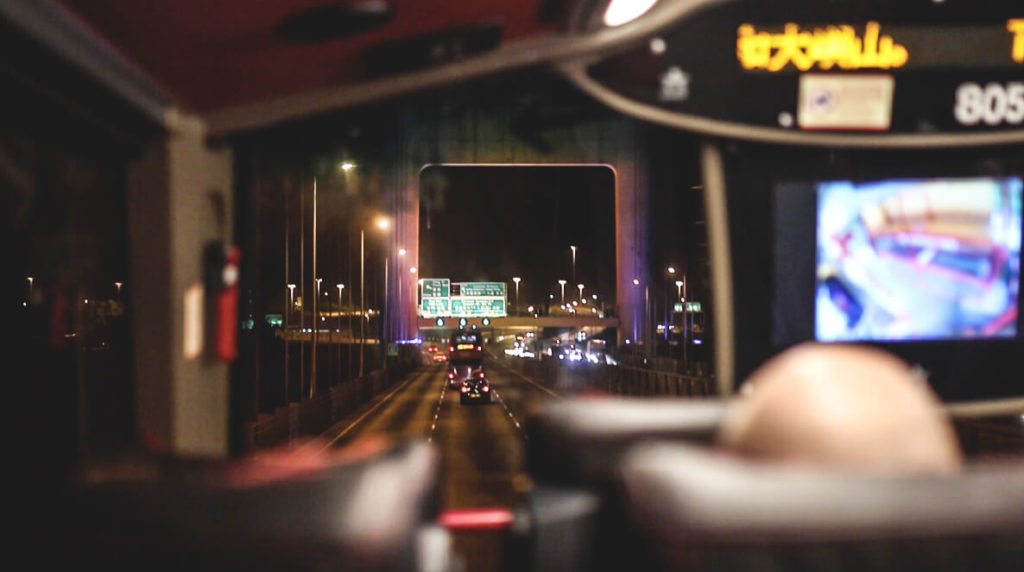
A single ride cost us 33 HK$, which was about 4 euros. The modern double-decker buses run in all directions throughout the day. Lines A10, A11, and A12 go to the city center. The rides now cost between 40 and 48 HK$.
Oh, and there’s even Wi-Fi on the bus. The Airport Express trains aren’t really any faster and cost considerably more. It costs 105 HK dollars to Kowloon, and 115 HKD to Hong Kong Island. You can find more information about airport transfers here: Hong Kong Airport Express.
Accommodation in Hong Kong
Accommodation is a tricky topic. Hong Kong is incredibly expensive, and even hostels aren’t any better. Our only option was to search via Airbnb. We found two small rooms in Kowloon for 20-23 euros a night. And these rooms were truly tiny. You share a hard bed, a refrigerator, and a shower/toilet stall. That’s about it as far as “amenities” go.
This was perfectly sufficient for our trip, but if you want more luxury, you’ll have to dig deeper into your pocket or wallet. Our two accommodations were one directly on Temple Street and the other directly in Mong Kok (Accommodation Temple Street / Accommodation Mong Kok). Thanks to the fantastic, well-developed public transport network, we got to any part of the city quickly.
Highlights in Hong Kong – Kowloon
There’s truly an endless amount to experience and do in Hong Kong. We wanted to explore the city at our leisure and not rush through it in three days, so we decided on a two-week stay. Of course, you can do quite a bit in five or six days, but then you’d have to be on the go every day. Since we worked on the weekends, we only had weekdays left. You’ll find out what we saw in the city in the following article.
1. Lively Kowloon
Kowloon is part of the Hong Kong peninsula. According to legend, the last emperor of the Song Dynasty stood on a mountain and said to his companions: “I see eight dragons!” By this, he meant the hills and mountains of Hong Kong. One of his companions, however, said: “I see nine dragons.” This ninth dragon was the emperor who stood before him. In Chinese culture, the dragon is a cultural symbol and represents the emperor. In Chinese numerology, the number nine represents the emperor, and “nine dragons” is called “Jiulong.” Hence the name “Kowloon.”
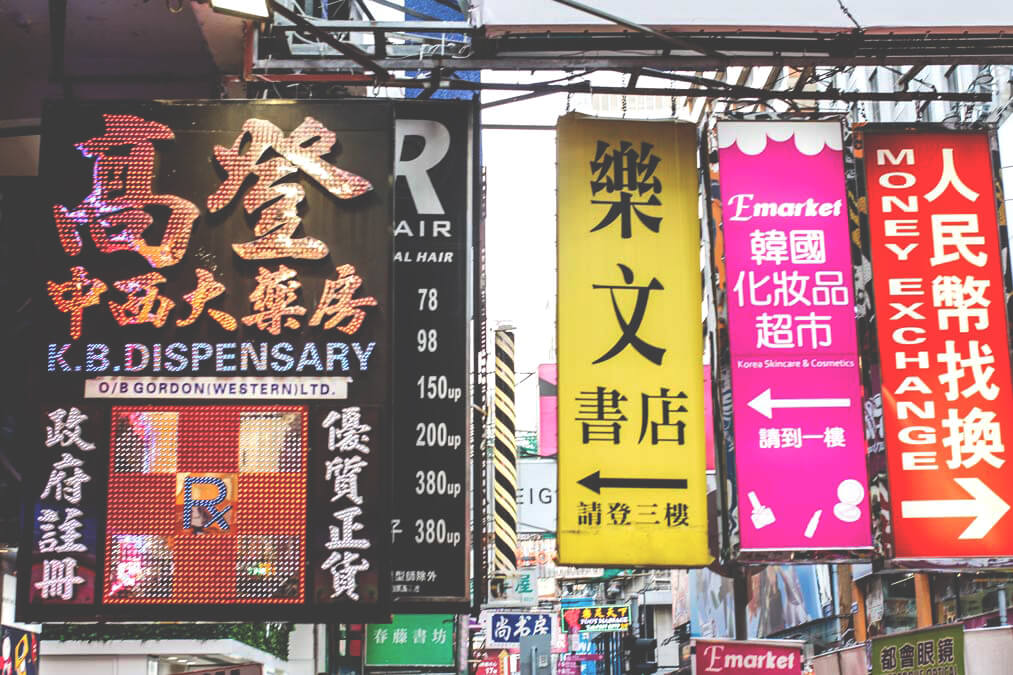
Kowloon is colorful, wild, sometimes hectic, but somehow also incredibly cool. Everything reminds you of New York, only Asian. Every street is an experience in itself, and it seems as if Hong Kong consists only of shops, malls, and restaurants. For us, Hong Kong was a pure consumer temple. So if you want to shop in the city, then this is the place for you.
We don’t know exactly how many malls there are in the city, but it feels like there are thousands. Nevertheless, it’s not particularly cheap, even for European budgets. We were only able to find real bargains at the street markets. Even technology was unexpectedly expensive, and we were hoping for cheap camera lenses. Unfortunately, that didn’t work out.

2. Mong Kok – Perfect for Shopping
We actually found the whole area around Mong Kok the coolest. This is where life happens; you can find absolutely everything here. And we mean “EVERYTHING.” You can even buy goldfish there. The best markets in general include Temple Street, Ladies Market, Ap Liu Street, Lascar Row, Hollywood Road, Seafood Street Market, Sneaker Street, Jade Market, Electronic Street, Flower Market, Goldfish Market, Cat Street, and many, many more. As you can see, you can probably spend 7 days a week just visiting the markets.
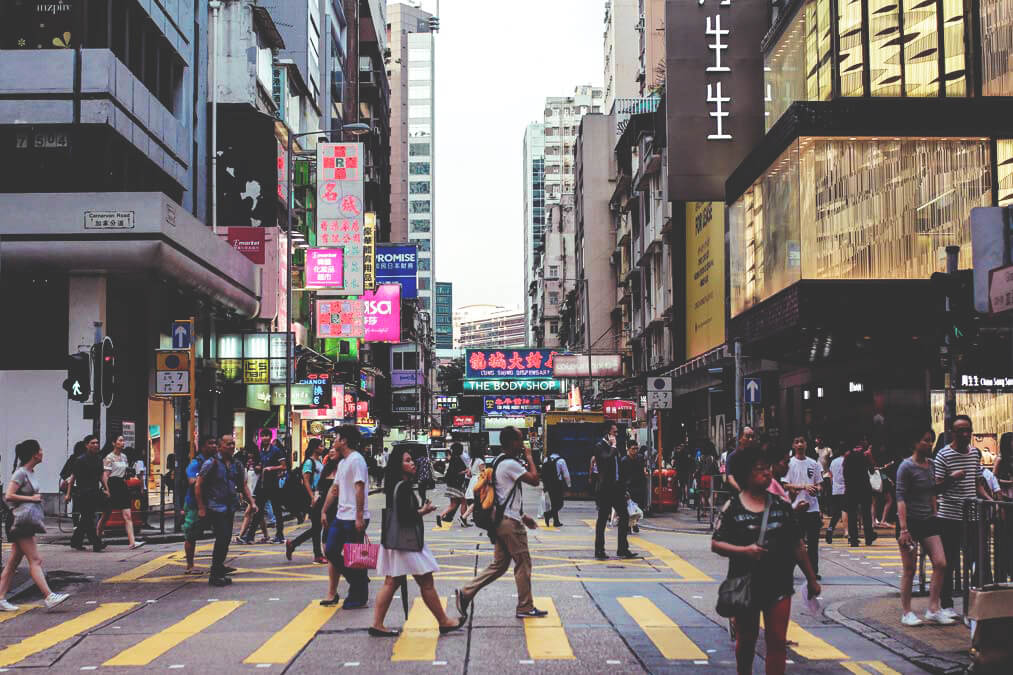
3. Symphony of Lights at the Harbor
We particularly liked the peaceful atmosphere at the harbor. We enjoyed sitting here and relaxing from the hustle and bustle of the city. Sitting down, letting your gaze wander, and enjoying the sea breeze is the motto there. From here, you can also take the Star Ferry to Hong Kong Island for 2 to 3 HK dollars (prices & times here). Incidentally, “The Symphony of Lights” takes place here at the harbor every evening at 8 p.m. Various buildings are illuminated in bright colors to the beat of the music. It’s not really spectacular, but you can generally take some cool pictures of the skyline.
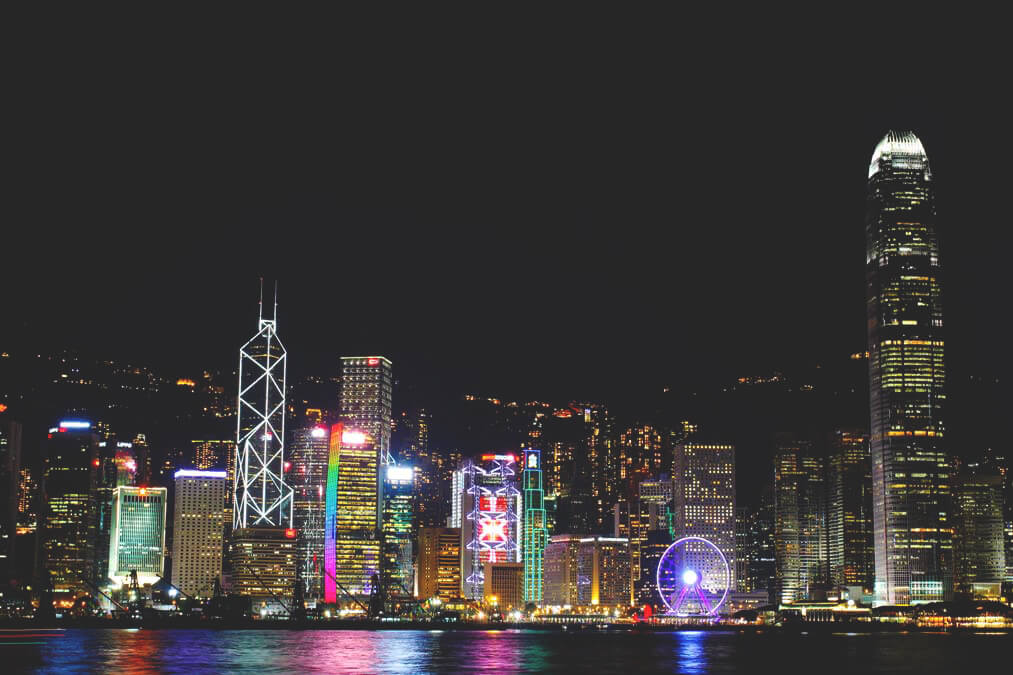
4. Avenue of Comedy Stars
Next, we go to the Avenue of Stars and the Avenue of Comedy Stars. The colorful little figures, which look as if they’ve just escaped from an Asian comic, are located in Kowloon Park. There, you’ll notice that typical Asian “kitsch.” But the park itself is also really beautiful. Here, you hardly notice the hustle and bustle of the metropolis; people stroll through the park, exercise, or read their newspapers on the park benches. There’s also an outdoor swimming pool there.
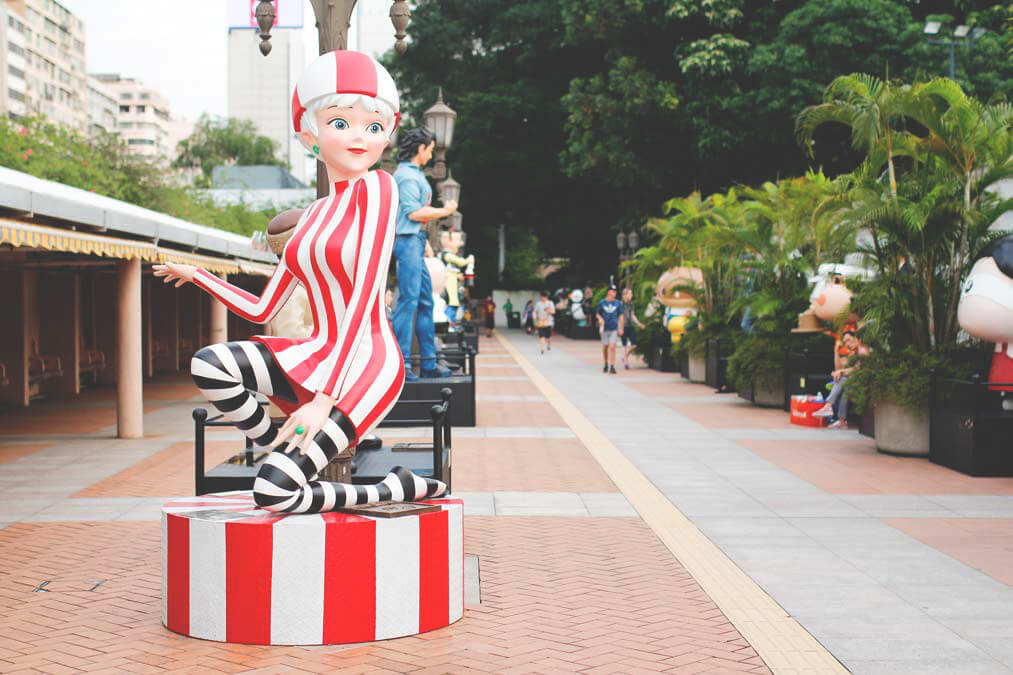
The Avenue of Stars is located down at the Waterfront. Here, artists from the region are celebrated and immortalized. You’ll find, among other things, Chacky Chan’s handprints, a sculpture of Bruce Lee, and McDull. They’re trying to turn Hong Kong into a kind of “Hollywood of the East.” We thought both spots were really cool and funny. It’s definitely worth a look if you’re already in the city.

5. Free entry to museums
There are lots of cool museums in Hong Kong, and the best part is, entry is always free on Wednesdays. According to Tripadvisor, the Space Museum, the Hong Kong Museum of Art, the Science Museum, the Hong Kong Museum of History, and the Hong Kong Heritage Museum are all worth seeing. We went to the Space Museum and thought it was really cool. The entry fees are generally not very high, so you can of course go on another day.
6. Beautiful Nin Lian Garden
If you’re looking for some real peace and relaxation, you should head to the Nin Lian Garden during the week in the late afternoon. Take the subway just a few stops to “Diamond Hill.” The entrance to the beautiful Chinese Garden is right there at the center. The garden offers many truly beautiful photo spots.
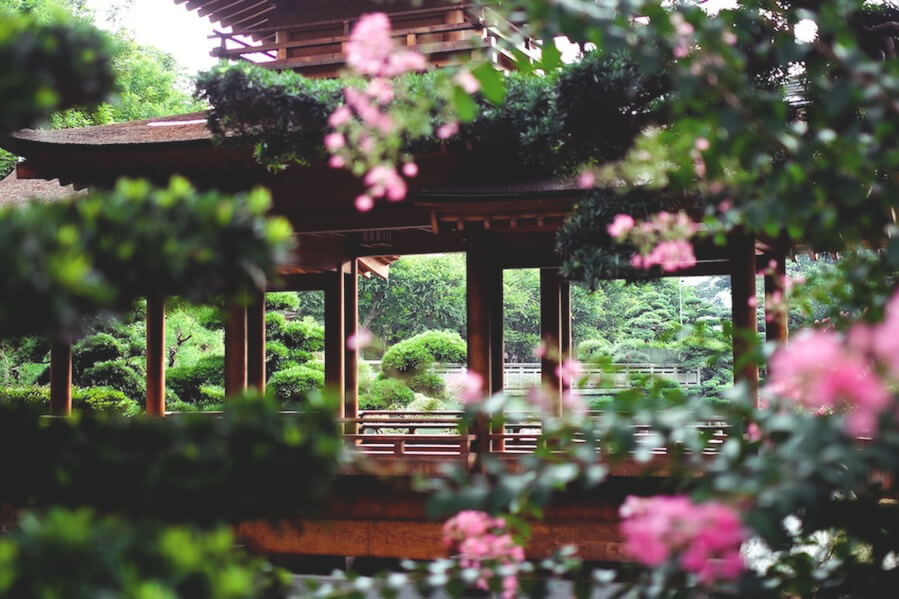
7. The 10,000 Buddhas
The Ten Thousand Buddhas are also very impressive. We’ve already reported on this destination. The path up to the temple is truly impressive, with its many Buddha statues – here and there, even a monkey scampers around in the tree branches. Take the metro to the “Sha Tin” station. Just a few minutes from the station, you’ll find the sign “Buddha Monastery.” Nearly 430 steps lead up, past approximately 12,000 statues. Marco was thrilled by the entire complex: “This is the most beautiful temple complex I’ve ever seen!”
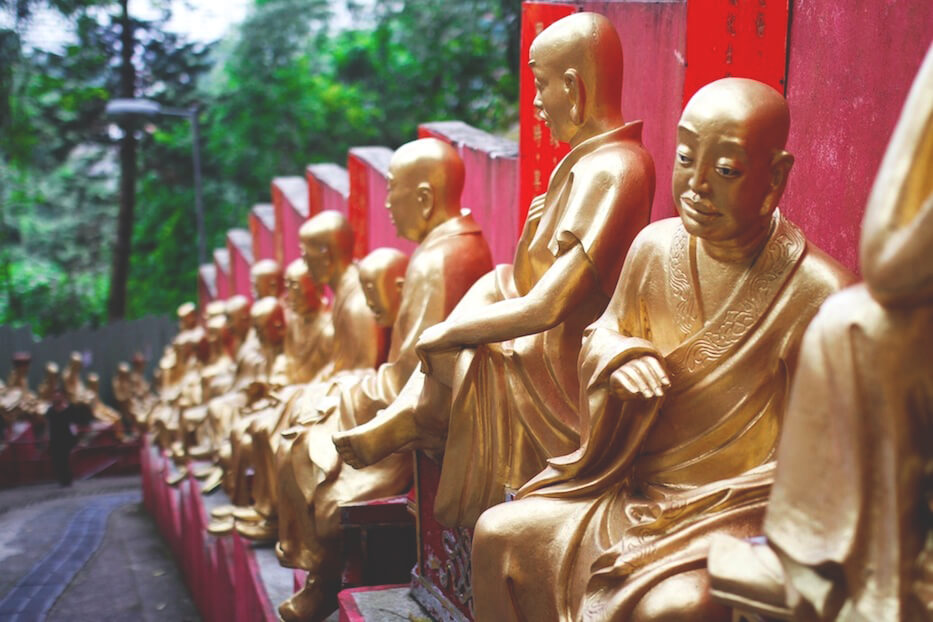
Highlights in Hong Kong – Hong Kong Island
Let’s head over to Hong Kong Island. Almost 1.3 million people live here, crammed into countless high-rise buildings. The area of Hong Kong Island, known as Central, is the historical, political, and economic center of Hong Kong. There’s a lot to discover here—far too much to cram into a few days.
1. Peak Tram to Victoria Peak
The absolute highlight is, of course, a ride on the Peak Tram to Victoria Peak. This nostalgic tram has been in operation since 1888 and offers an incredibly beautiful view of the skyline of Hong Kong Island and Kowloon. It was cloudy and gray every day we were there, so we didn’t go up the mountain. But with blue skies, it’s definitely worth the trip.
According to our research, a round trip currently costs HK$52, which is roughly €6.70. You can also take bus number 15. The journey takes about 40-50 minutes, but costs just under HK$10 each way. The Peak Tram can often be in line forever, which is why the bus is a good alternative. More information here: www.thepeak.com.
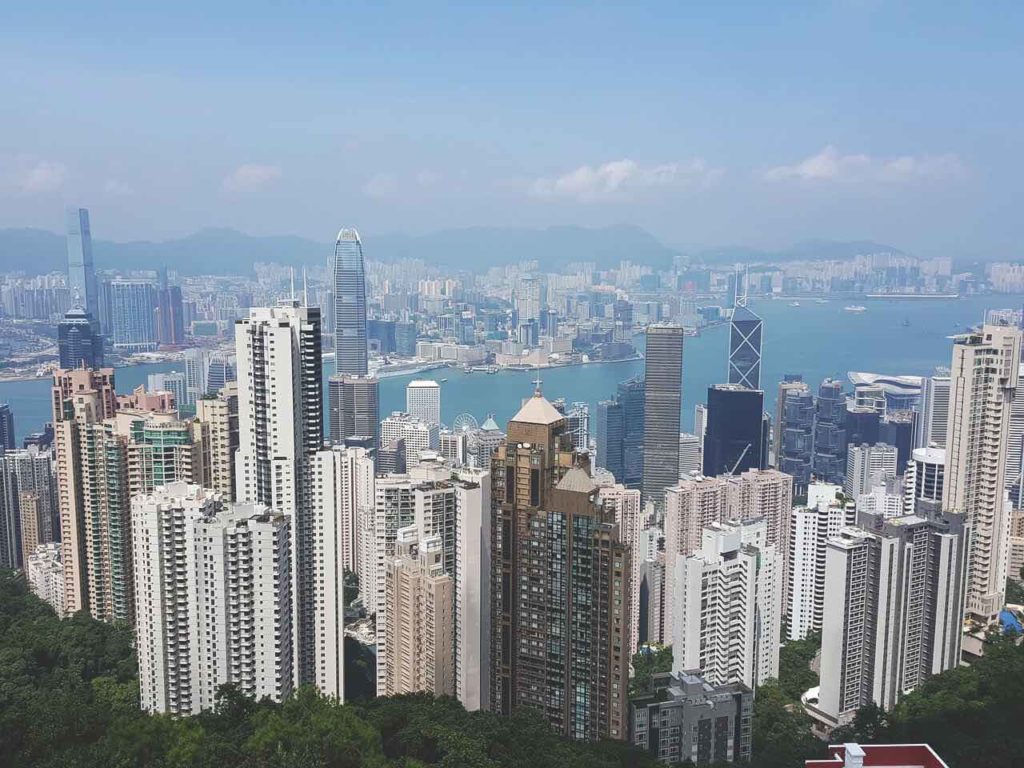
2. The Man Mo Temple
Next, we head to the Man Mo Temple, one of the oldest and most famous temples in all of Hong Kong. Inside the temple, the air is filled with the scent and smoke of the incense coils. The smoke is said to carry prayers to the gods. The two wooden chairs are used to carry the gods on holidays.
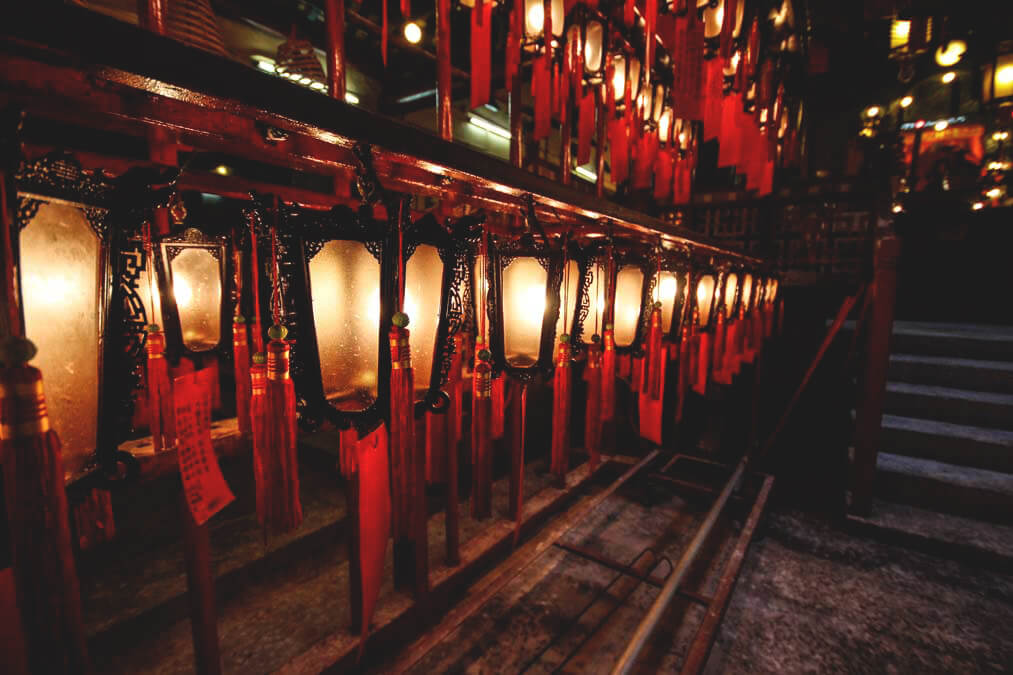
3. The trendy Soho district
The trendy Soho district is located south of Hollywood Road and is known for its historic, narrow streets and upscale restaurants. You can explore many fashion boutiques, art galleries, and antique shops here. But you shouldn’t go hungry here. Prices are even higher than on the mainland. Fried rice with vegetables can easily cost €15 here, a plate of fries costs €10, and we found a 30cm Margarita pizza for a mere €35.
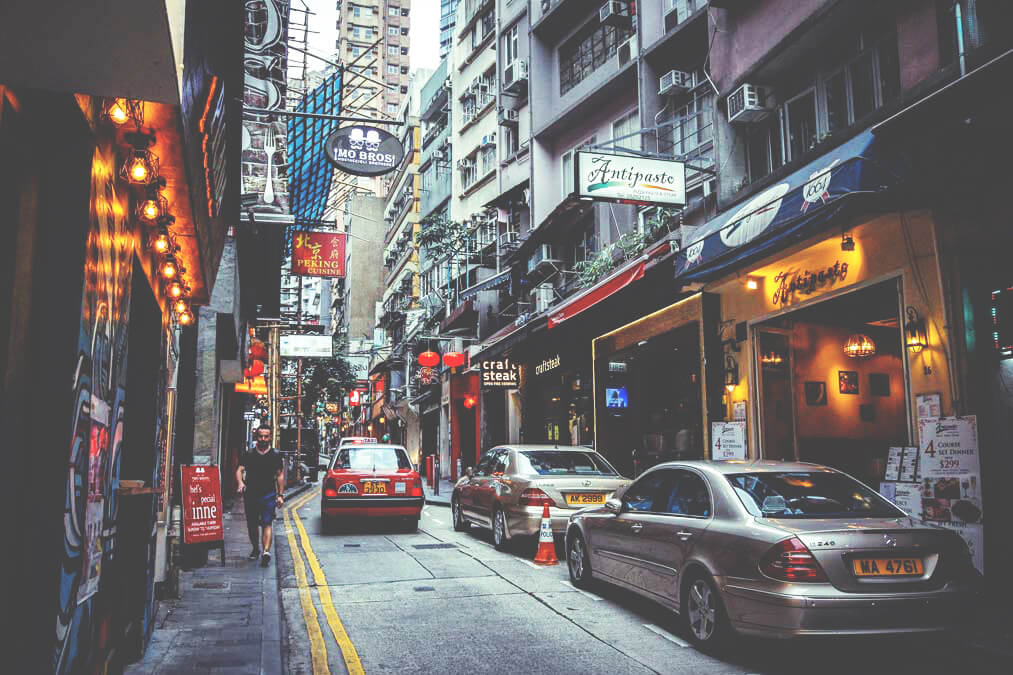
5. Central Mid-Levels Escalator
If you want to get a first impression of the area, then take the world’s longest covered escalator (Central Mid-Levels Escalator). Incidentally, it’s also in the Guinness Book of Records and runs through the popular Soho district, among other places. Twenty escalators and three conveyor belts, each over 800 meters long, climb almost 135 meters and connect the Central and Mid-Levels districts. Along the way, you can also “get off” here and there and continue on foot.
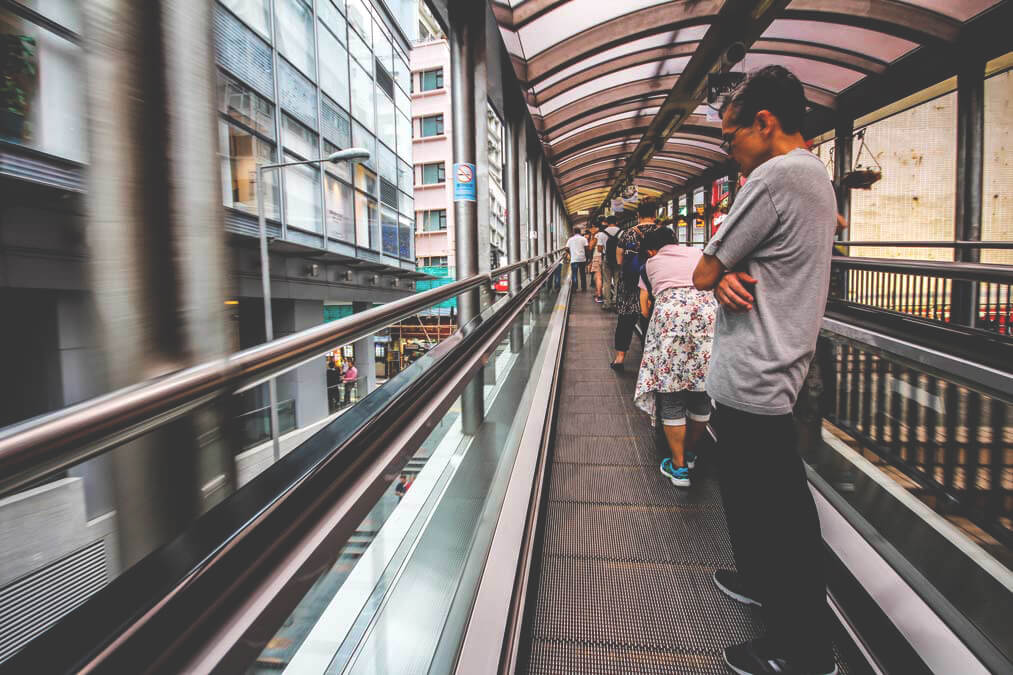
6. Two International Finance Center
The Two International Finance Center is located right on the Waterfront and is an impressive skyscraper with a height of 412 meters. The IFC Mall is also located here, which is really cool. And I don’t know why, but it always smells so good in there. Here we also tried out some super spacey VR headset, which suddenly immersed us in a kind of video game – super cool (note 05/2020: back in 2016, this was still the latest thing).
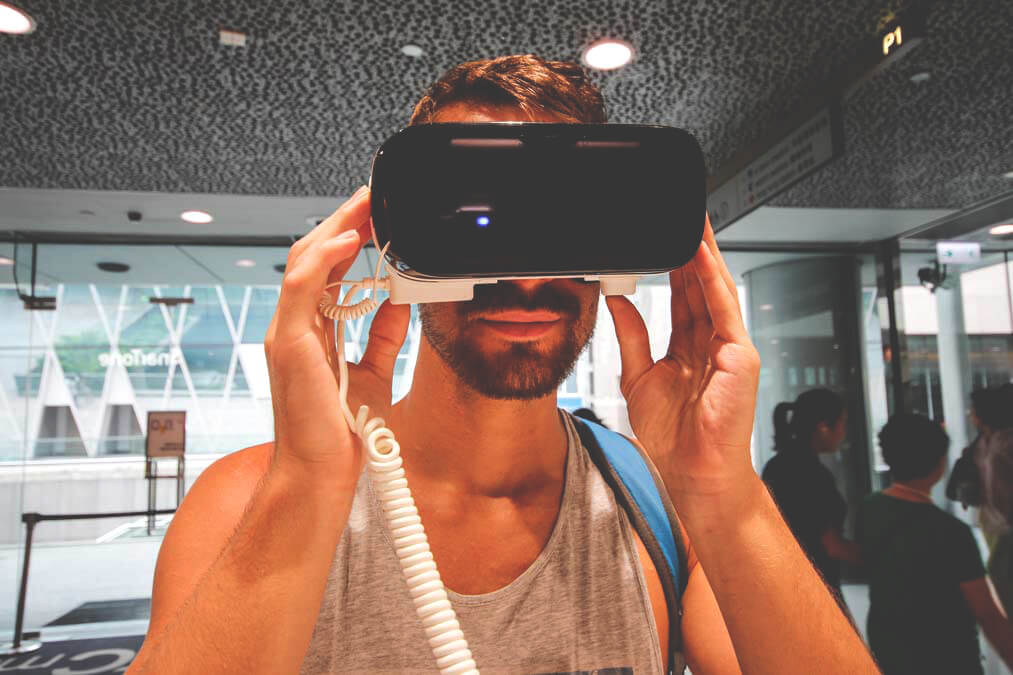
7. Great view of Hong Kong
On the 55th floor of the IFC there’s a free exhibition on the history of the Hong Kong dollar. But the best part: it’s free, and you get a great view of the far end of Hong Kong Island. So you don’t have to pay the €20 entrance fee for a cool view, like at Skybar 100. But if you pay the hefty €20, you get a great view. Bargain hunters, on the other hand, come here. (Bring your passport!)
On the Central Waterfront Promenade, there’s a Ferris wheel (Hong Kong Observation Wheel), from which you’re sure to enjoy a fantastic view. A ride currently costs only HK$20 (HK$2.50). You can find more information here: Observation Wheel Hong Kong.
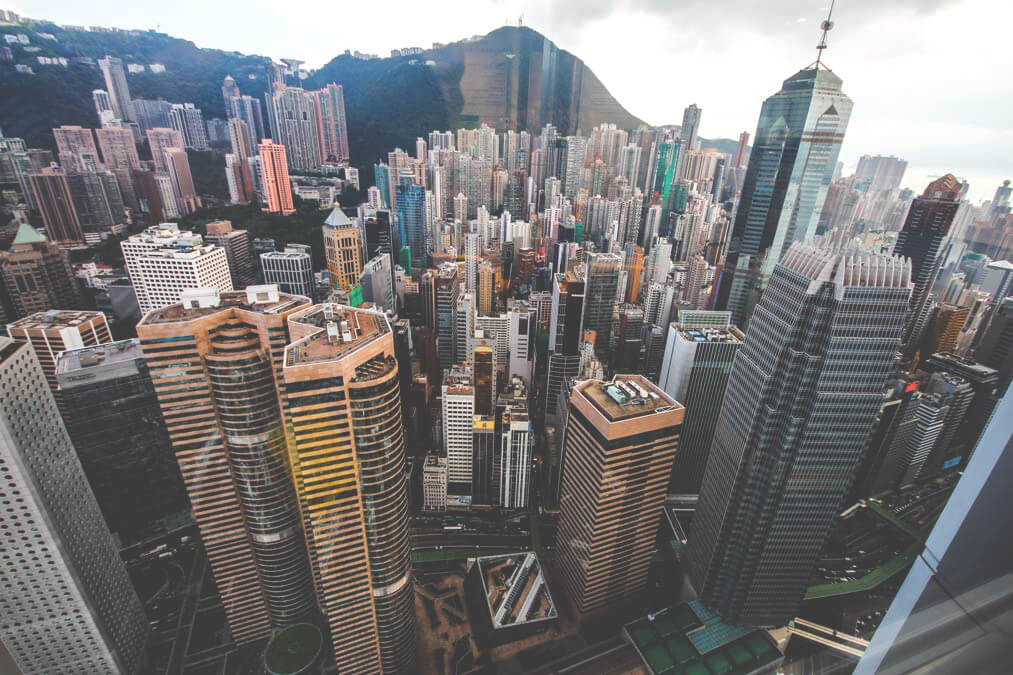
Hiking on Dragon’s Back
One of the highlights in Hong Kong is definitely the magnificent nature at the back of Hong Kong Island. A trip to Dragon’s Back is definitely a MUST. Hiking enthusiasts will get their money’s worth here. The trail offers fantastic views of the coast and the surrounding islands, bays, and the South China Sea. The high humidity was quite exhausting, but the trip was still amazing!
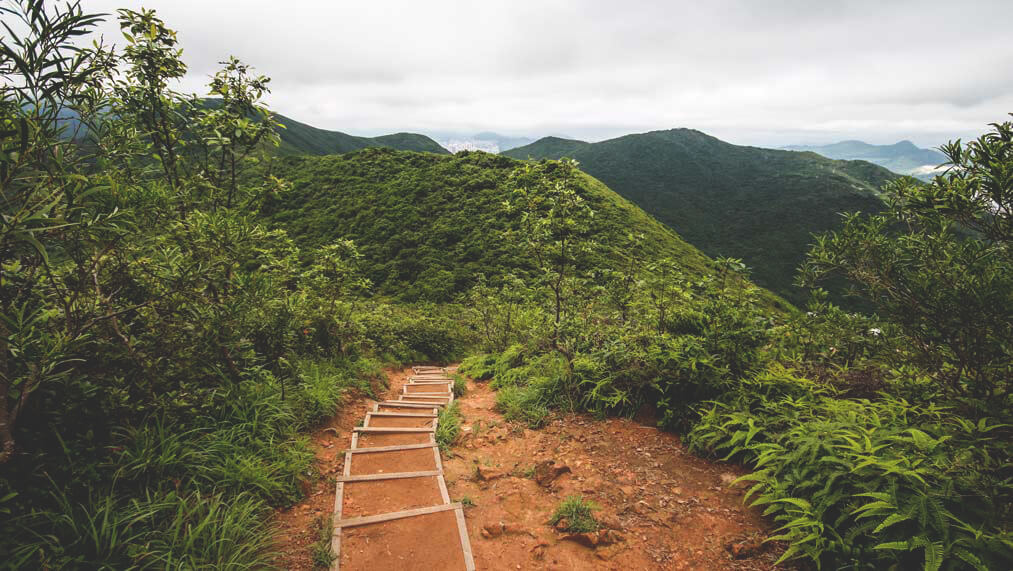
After a few hours of strolling through nature, we reached Big Wave Bay, where we could finally jump into the water (Hong Kong has almost 40 official beaches). It’s not the most insane, but it’s good for cooling off after all the exertion. Be sure to plan 6-8 hours for a trip like this. From Kowloon or Hong Kong Island, you can take the bus directly to the trailhead, “To Tei Wan.”
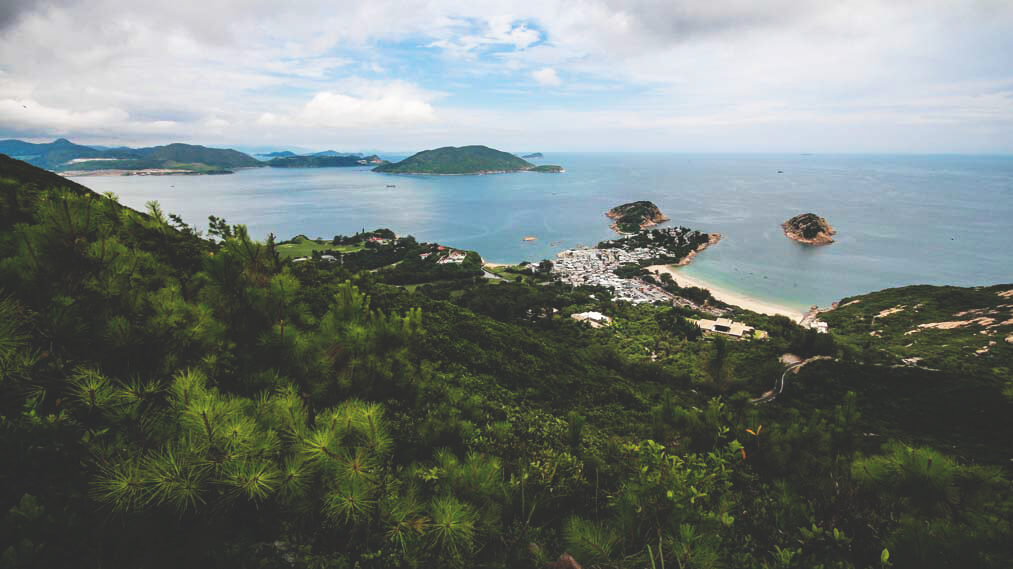
Day Trip to Lantau Island
We somehow didn’t manage to make the day trip to Lantau Island. We actually wanted to see the Big Buddha, explore the small fishing village, and visit a few beaches. However, it was cloudy and incredibly humid every day, so we couldn’t really motivate ourselves. On the island, there’s the airport on a man-made “island” in the north, and then there’s a cable car.
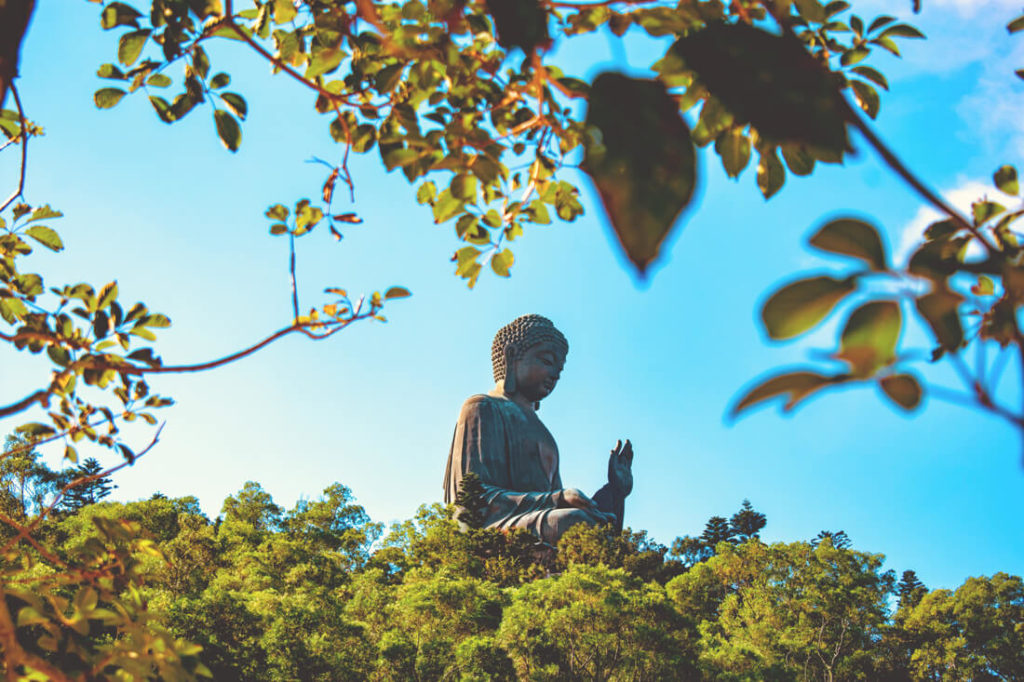
This takes you all the way up to the Big Buddha. The ride takes about 20 minutes. However, it was far too expensive for us, so we would have skipped the cable car anyway. You can also get there by bus. You should definitely plan a whole day for a trip like this, as the transfers are quite long. There’s also a ferry from Victoria Harbour to Mui Wo on Lantau Island.
Day Trip to Lamma Island
We took the ferry to Lamma Island. The trip took about 20 minutes and cost about €3 or €4 each way. However, the tour serves two different ports – one in the north and one in the east. We started in the north and walked across the island to the port in the east. There’s a small fishing village here where you can relax and enjoy a bite to eat.
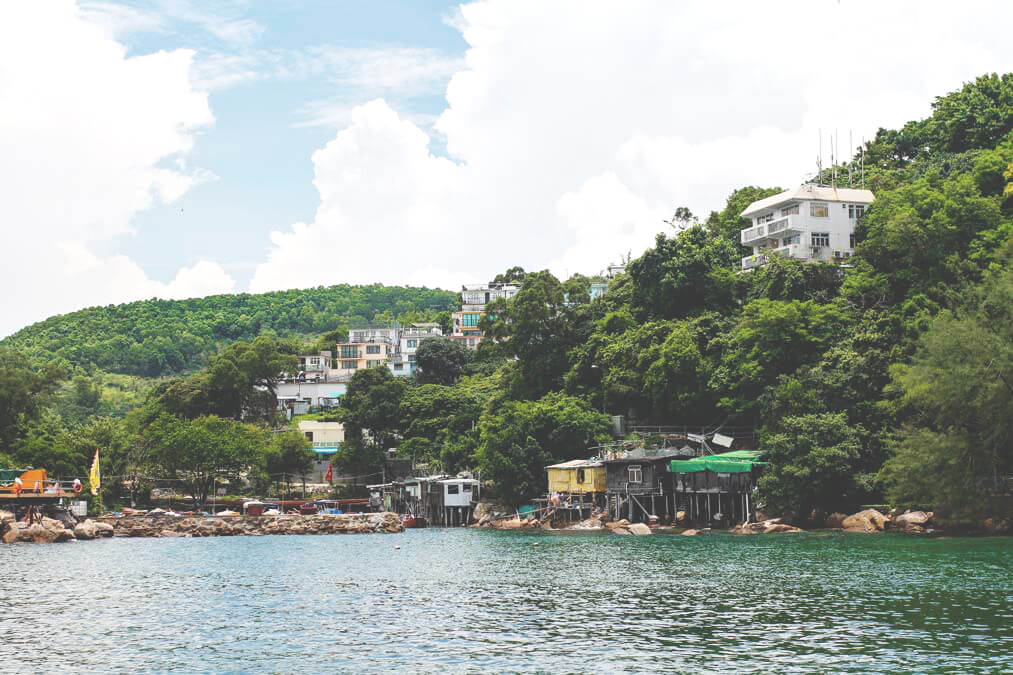
You can take a leisurely walk along the coast and enjoy a bite to eat here and there. It was so hot that day that we went straight to Hung Shing Yeh Beach. The beaches aren’t the best or prettiest, but they certainly provide a welcome cooling-off point. There are other islands to explore, including Peng Chau and Cheung Chau.
Day Trip to Macau and Shenzhen
There’s so much to discover in Hong Kong; you probably won’t be able to do much in a single day. We also wanted to take the trip to Macau, but the tickets were far too expensive for us (€19 per person one way). Macau is said to be something like a “Las Vegas,” with casinos and large hotel complexes. It’s sure to look pretty cool there in the evening. You must definitely bring your passport, as Macau is not part of Hong Kong but is also an independent city. So, you are officially leaving Hong Kong. More information here: Ferry & Prices.
You can also take the train to Shenzhen. You’ll then find yourself in the heart of the vibrant Chinese city. At first glance, you won’t notice any difference from the developed Hong Kong side. There are good restaurants, well-known hotels, and even a Starbucks on the next corner. You can get there quickly with the MRT, and the fare is only around HK$30. Entry is apparently possible with visitor visas, which are available at the “border.”
Even during our 14-day stay, we didn’t manage to see all of Hong Kong’s highlights. The city is incredibly interesting and diverse. We think a detour is definitely worth it. We hope our tips and advice will help you with your planning. If you use our tips to travel to Hong Kong, please leave us a comment.
General information about Hong Kong
Getting there: Getting there is easy; from Germany, you can fly from many airports. Flights are often a bargain for under €400. If you’re already in Asia, you can also travel cheaply with Air Asia from Kuala Lumpur, Bangkok, Singapore, etc.
Entry: Hong Kong is a special administrative region and is therefore “separated” from China. However, you don’t need a visa in advance, as with a German passport, you’ll receive a visa-on-arrival upon entry and can stay for a full 90 days. The same applies to Macau. Your passport should be valid for at least another 6 months.
Airport transfer: As already mentioned, there are express trains, taxis, and buses. The bus ride costs just under $33 (€3.75). The train is more expensive and not particularly faster. You can reach the city center in 30 minutes by bus; the ride on the double-decker buses is easy, including Wi-Fi. The train or bus are signposted everywhere at the airport. It’s impossible to get lost—actually!
Currency: In Hong Kong, you pay with the Hong Kong dollar. 1 euro currently gives you just under 8.50 HK$. We still use the DKB Visa Card abroad; there were no fees at the ATMs.
Accommodation: Oh man, Hong Kong is really expensive. Neither hotels nor hostels are particularly cheap. Check out Airbnb; we at least got a small private room there for just under €20.
Getting around: Hong Kong has a first-class public transportation network. It’s best to buy the Octopus Card for 150 HK$. This includes a 50 dollar deposit for the card and 100 HK$ for unlimited use (you can use this to pay in restaurants, among other things). If your balance runs out, simply top it up at the nearest ATM. You can, of course, also buy individual tickets.
The price varies depending on the route, but we never paid more than 10 dollars (2.20 euros), sometimes only 4 dollars (50 cents). The metro is quick and easy to travel. The buses also run constantly. The Star Ferry takes you to Hong Kong Island for a reasonable price. The ride costs just under 25 cents – awesome! You can also take the metro or bus (underwater connecting tunnel, that thing).
Best time to travel: We were in Hong Kong in June. It rained practically every day, but not continuously and always only for short periods. It was also warm and super humid (including dripping sweat just from waiting at the traffic lights). We sweated like pigs; it was almost unbearable, with only a smidgen of breeze. January and February, May and June, and October to December are probably the better times to visit Hong Kong. From May to November, and especially in September, Hong Kong is occasionally hit by typhoons.